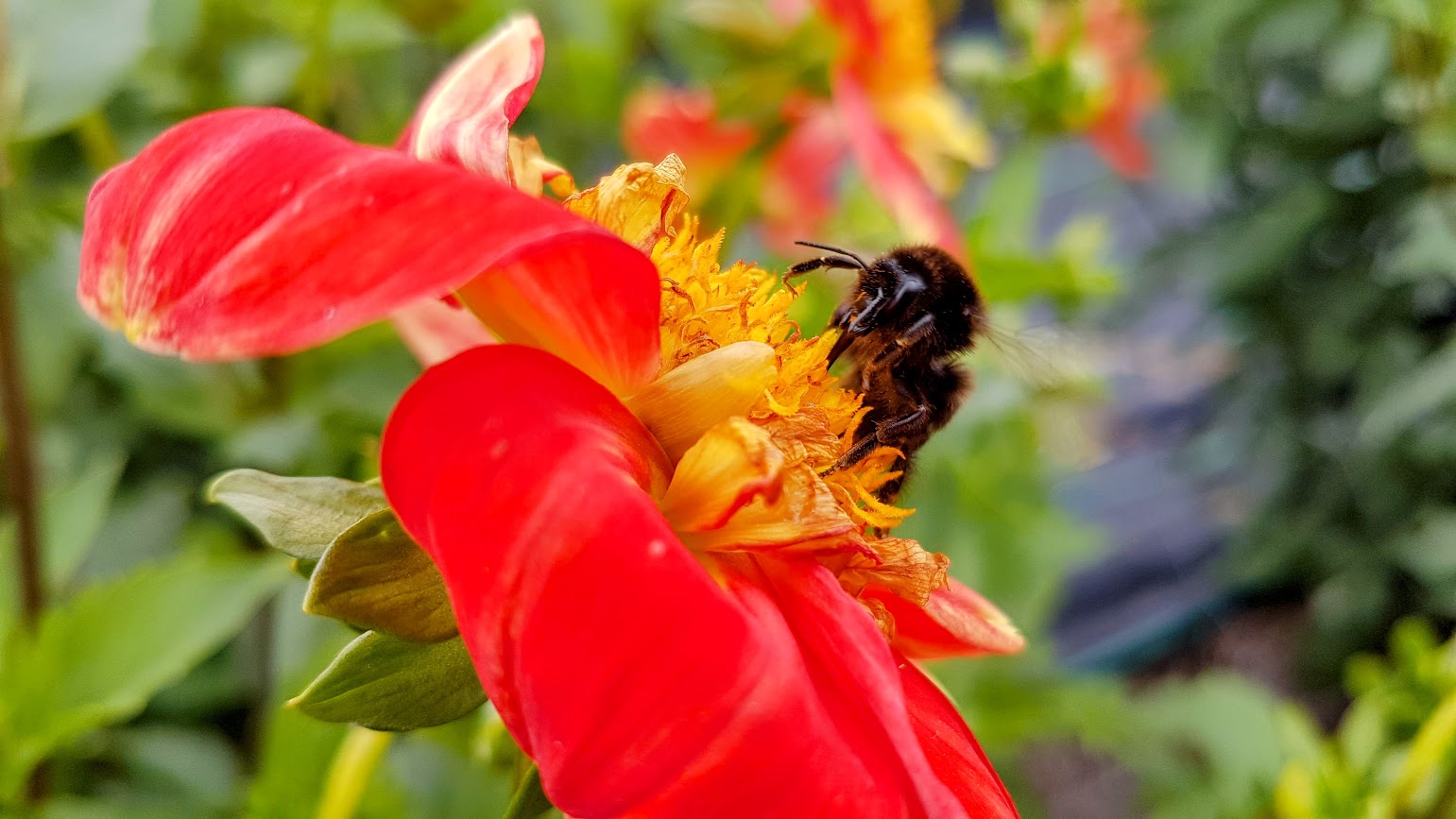Science
Bees’ Brain Insights Could Revolutionize AI Development

Researchers from the University of Sheffield have unveiled fascinating insights into how bees utilize their flight movements to enhance brain signals, potentially informing advancements in artificial intelligence (AI). The study reveals that these insects possess remarkable abilities to recognize complex visual patterns, including differentiating between human faces, by optimizing their neural circuits through movement.
The team developed a digital model of a bee’s brain, illustrating how flight dynamics contribute to clear and efficient brain signals. This research suggests that AI and robotics could benefit from adopting a similar approach, prioritizing operational efficiency over reliance on extensive computing power.
Understanding Bee Intelligence
Bees are equipped with brains no larger than a sesame seed, yet they demonstrate sophisticated visual processing capabilities. The findings indicate that their neural circuits are designed not just to process visual information in isolation but to do so through active engagement with their environment during flight. This challenges traditional views of intelligence, highlighting the importance of the interconnectedness of the brain, body, and surroundings.
The model shows that bee neurons adapt to specific directions and movements, honing their responses through repeated exposure to various stimuli. This adaptability allows bees to efficiently recognize their environment without needing instant rewards, thereby conserving energy and processing capacity. In essence, bees actively shape their perception of the world, illustrating an intricate relationship between action and perception.
To validate their computational model, researchers subjected it to visual challenges akin to those faced by real bees. In a key experiment, the model successfully distinguished between a ‘plus’ sign and a ‘multiplication’ sign by mimicking the scanning behavior of real bees. This behavior, observed in previous studies, underscores the effectiveness of the bees’ approach.
Implications for AI and Robotics
The implications of this research could be transformative for AI and robotics. By suggesting that movement can be leveraged to gather relevant information, the study indicates that future robots could be designed to operate with greater intelligence and efficiency, without necessitating large computer networks.
The findings, published in the journal eLife under the title “A neuromorphic model of active vision shows how spatiotemporal encoding in lobula neurons can aid pattern recognition in bees,” emphasize a significant idea: intelligence arises from the collaborative function of the brain, body, and environment. This work adds to the growing body of evidence suggesting that animals do not merely receive information passively; they actively shape their understanding of the world around them.
As researchers delve deeper into the mechanisms of bee intelligence, the potential applications in AI design are vast. By mimicking nature’s efficient designs, scientists hope to lay the groundwork for next-generation AI systems that can learn and adapt with minimal resource expenditure. This approach not only enhances our understanding of insect behavior but could also lead to smarter, more capable robotic systems in the future.
In summary, the study of bee brains provides a unique perspective on intelligence that could significantly influence the future of technology, emphasizing the value of movement in shaping perception and understanding complex patterns.
-

 Science3 months ago
Science3 months agoToyoake City Proposes Daily Two-Hour Smartphone Use Limit
-

 Health4 months ago
Health4 months agoB.C. Review Reveals Urgent Need for Rare-Disease Drug Reforms
-

 Top Stories4 months ago
Top Stories4 months agoPedestrian Fatally Injured in Esquimalt Collision on August 14
-

 Technology3 months ago
Technology3 months agoDark Adventure Game “Bye Sweet Carole” Set for October Release
-

 World3 months ago
World3 months agoJimmy Lai’s Defense Challenges Charges Under National Security Law
-

 Lifestyle4 months ago
Lifestyle4 months agoVictoria’s Pop-Up Shop Shines Light on B.C.’s Wolf Cull
-

 Technology3 months ago
Technology3 months agoKonami Revives Iconic Metal Gear Solid Delta Ahead of Release
-

 Technology3 months ago
Technology3 months agoApple Expands Self-Service Repair Program to Canada
-

 Technology3 months ago
Technology3 months agoSnapmaker U1 Color 3D Printer Redefines Speed and Sustainability
-

 Technology3 months ago
Technology3 months agoAION Folding Knife: Redefining EDC Design with Premium Materials
-

 Technology4 months ago
Technology4 months agoSolve Today’s Wordle Challenge: Hints and Answer for August 19
-

 Business4 months ago
Business4 months agoGordon Murray Automotive Unveils S1 LM and Le Mans GTR at Monterey









